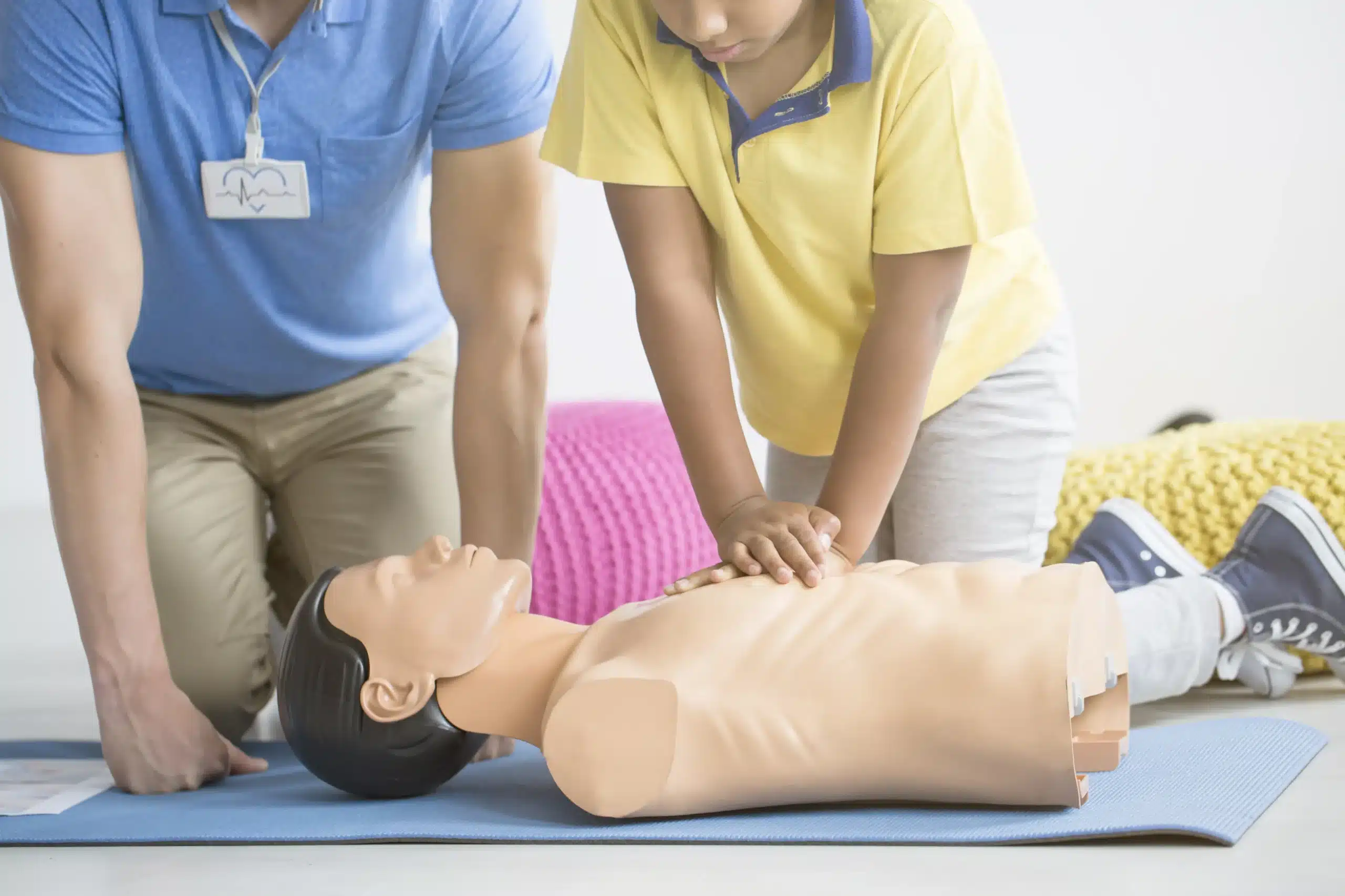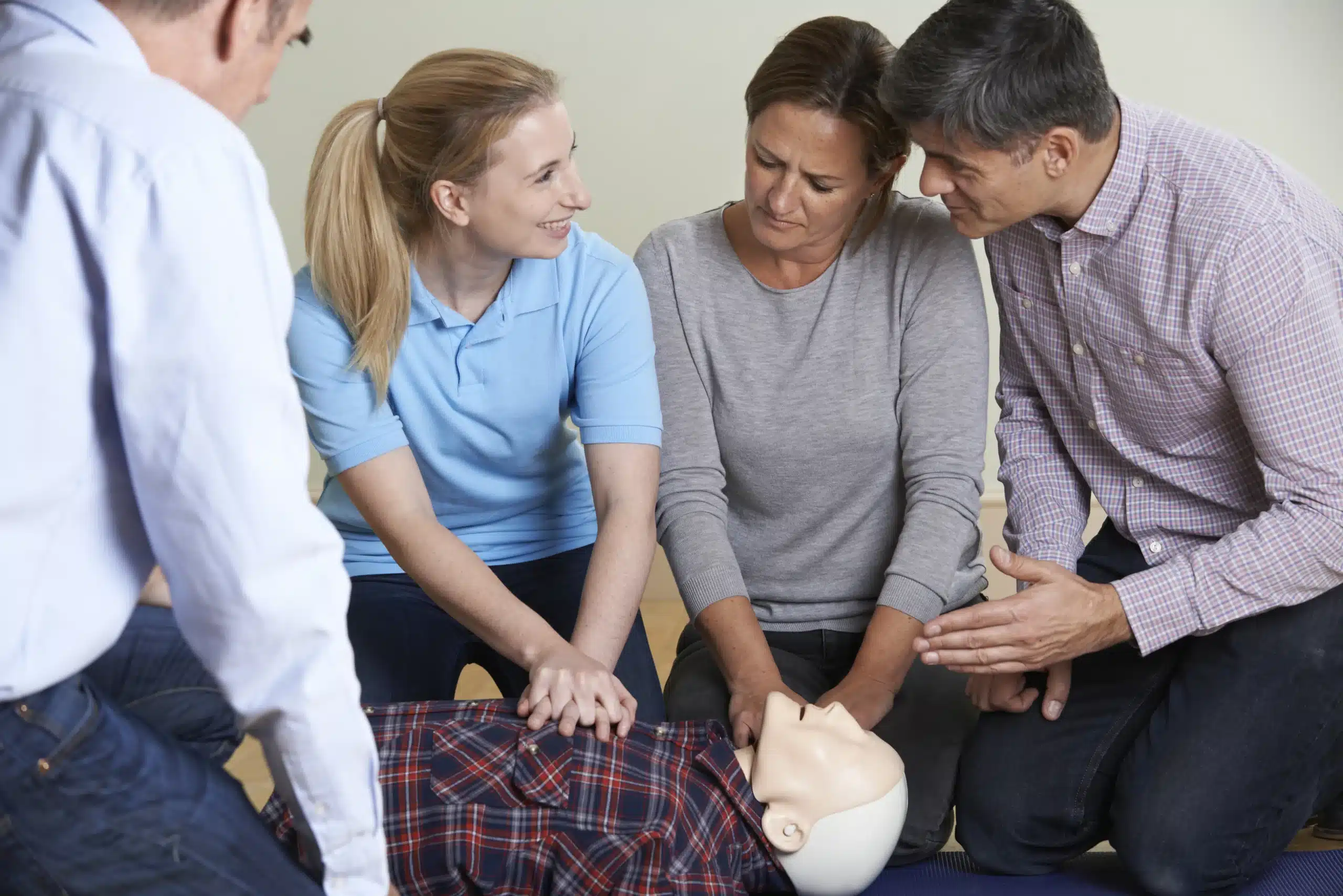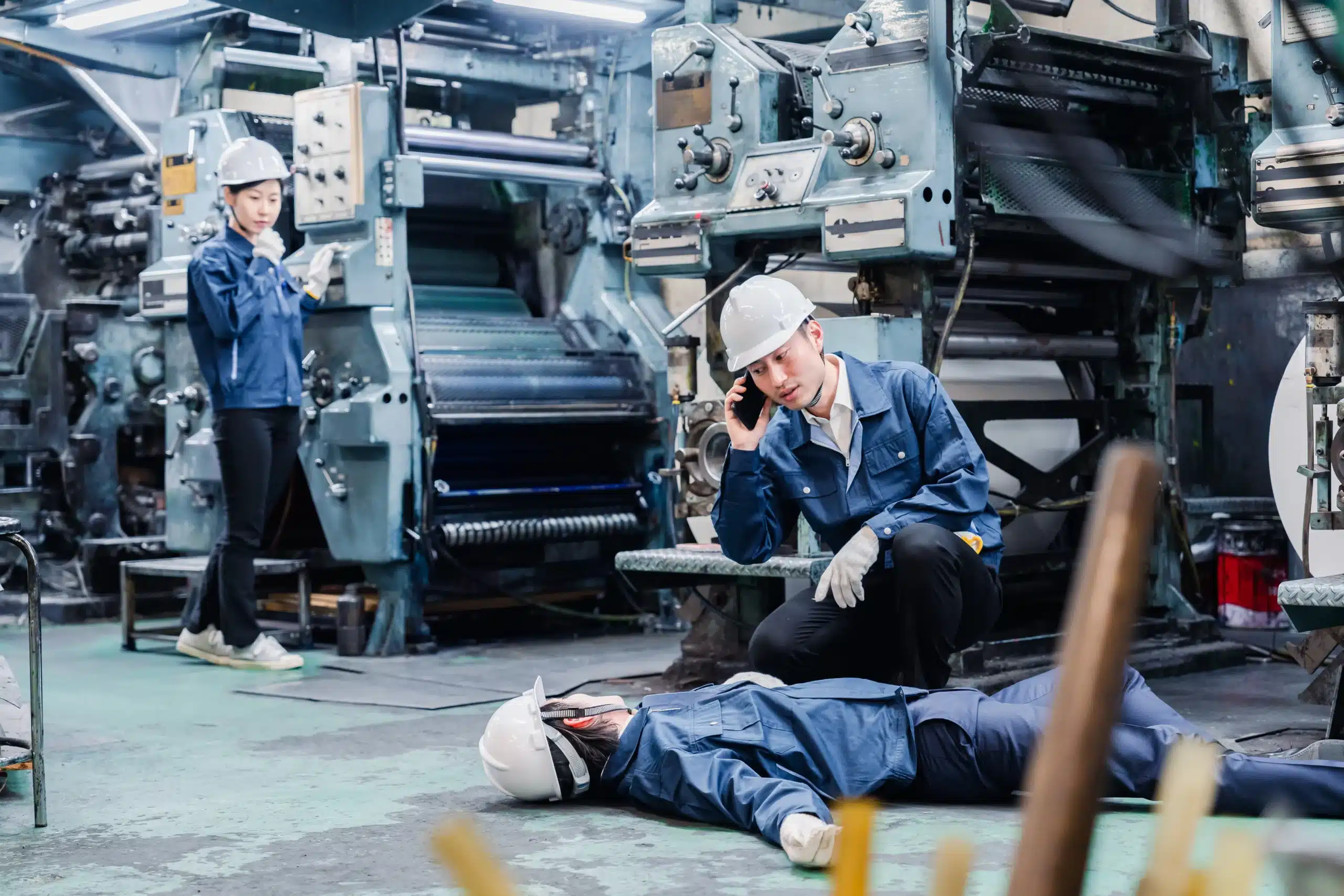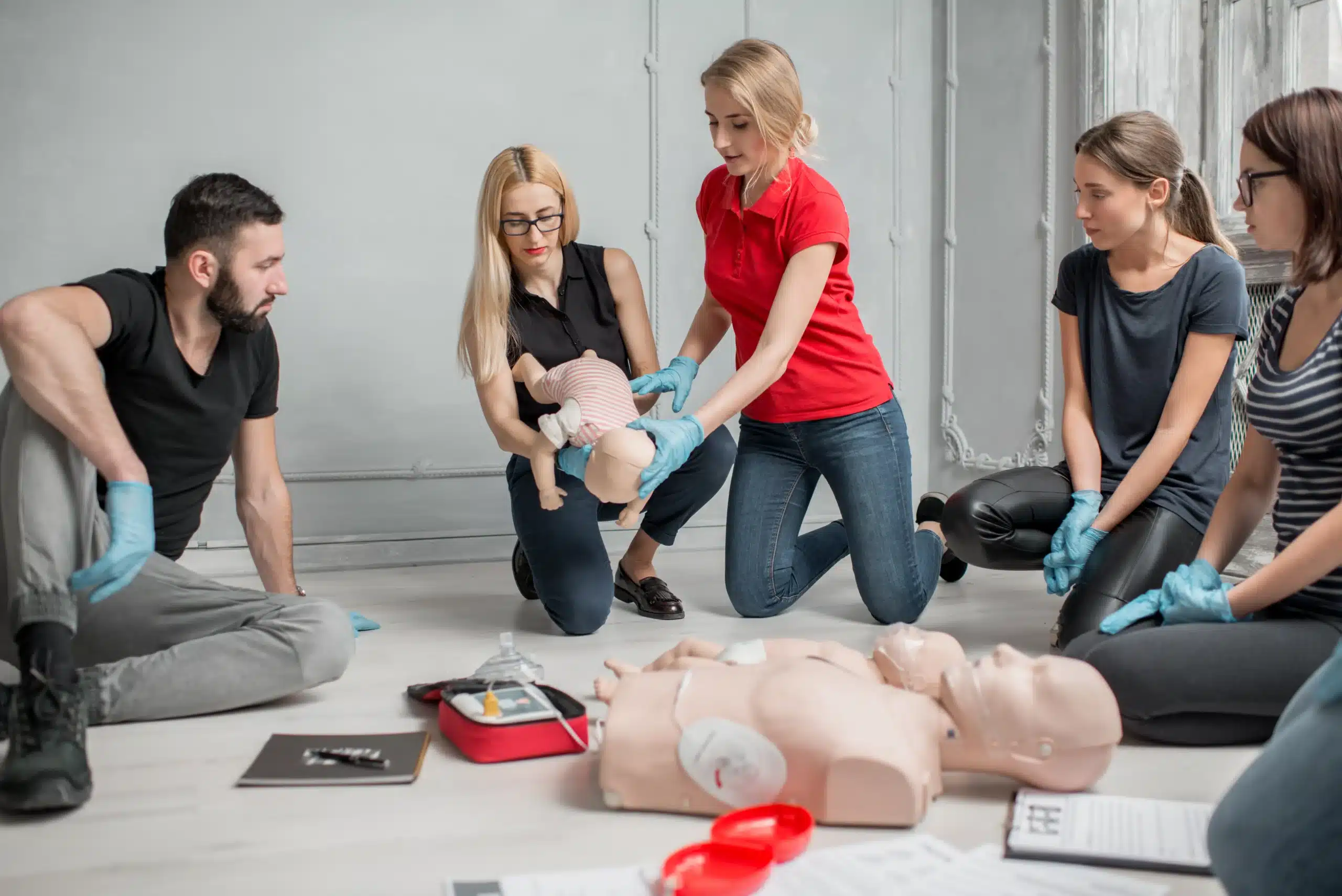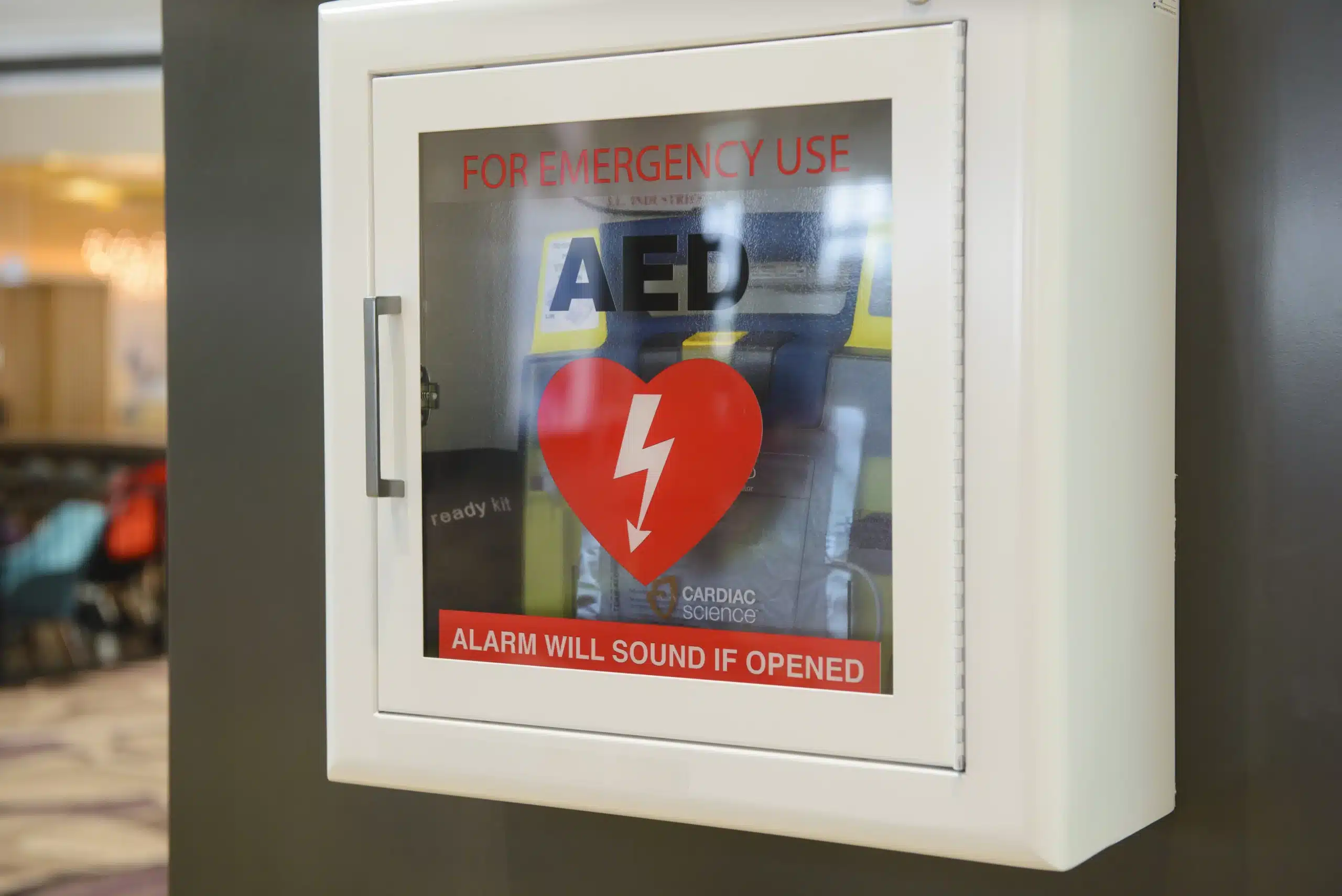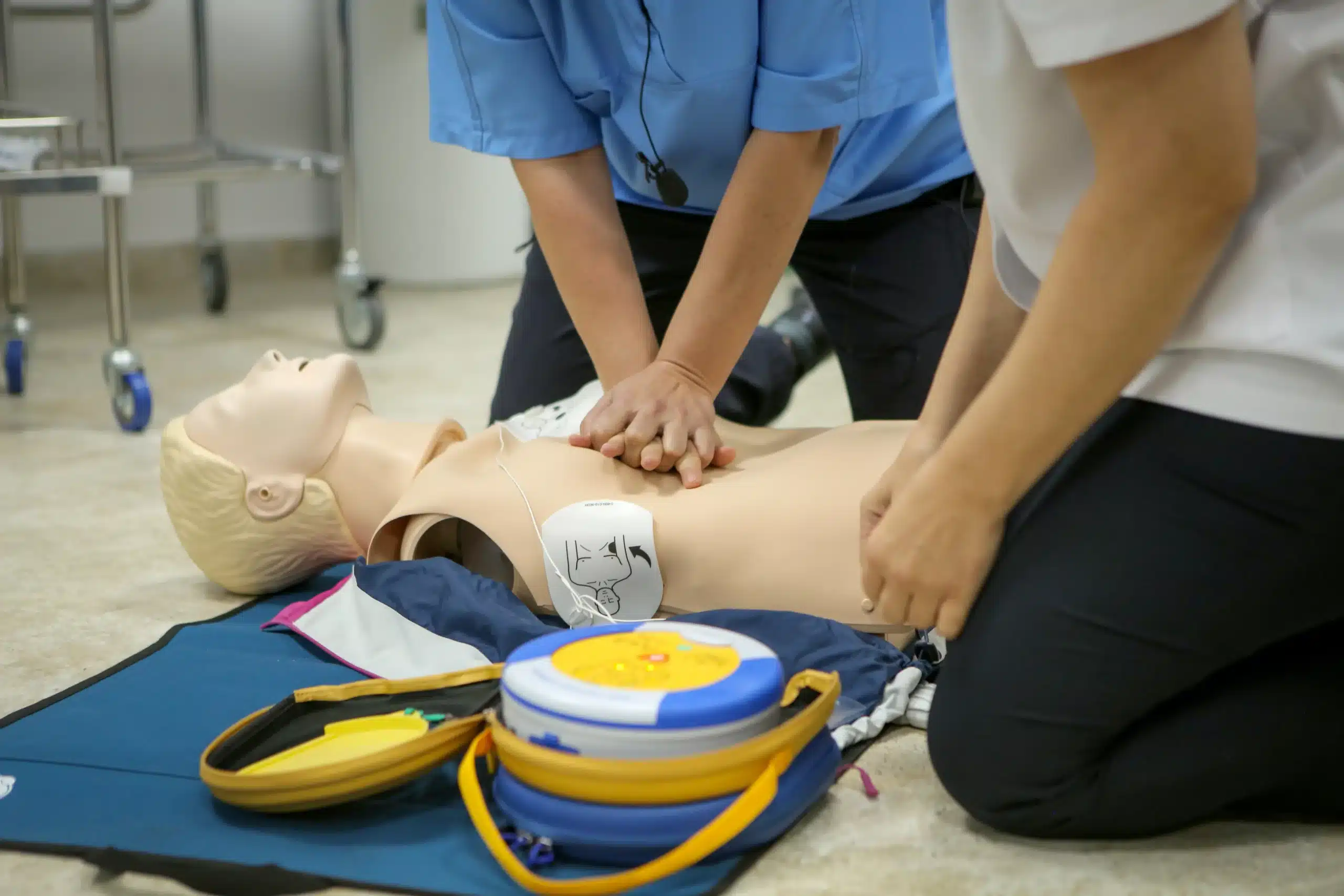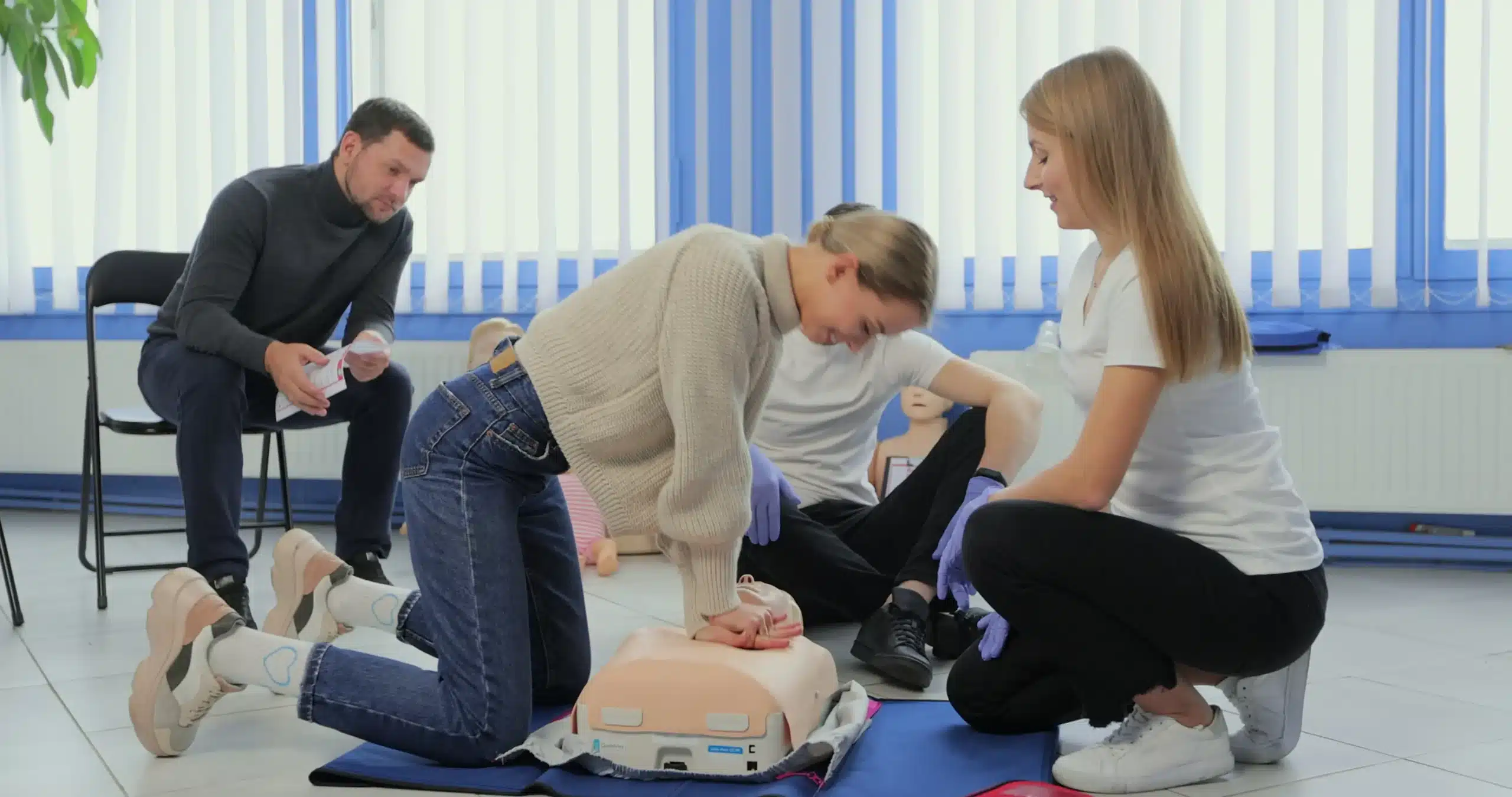Accidents happen, especially with kids. A fall on the playground, a choking incident at dinner, or a sudden allergic reaction can quickly turn a normal day into a crisis. Being prepared for these moments is crucial, and that’s where pediatric CPR and first-aid training comes in. This guide is your one-stop shop for everything you need to know about pediatric CPR and first-aid in Davis. We’ll cover where to find training, what to expect in a course, and how to maintain your skills over time. Empower yourself with the knowledge and confidence to handle any pediatric emergency, ensuring the safety and well-being of the children you care for.
Key Takeaways
- Pediatric CPR and First Aid training empowers you to handle childhood emergencies: Equipping yourself with these skills provides the confidence to respond effectively to various situations, from minor injuries to life-threatening events.
- Choose a course that aligns with your schedule and learning preferences: Explore options like in-person classes, blended learning (combining online and in-person instruction), and even in-home training to find the best fit.
- Stay prepared by refreshing your skills and renewing your certification: Regular practice and renewal ensure your skills remain sharp and up-to-date with the latest guidelines, maximizing your ability to provide effective care when needed.
What is Pediatric CPR and First Aid?
Pediatric CPR and First Aid are essential life-saving skills for anyone caring for infants and children. These courses empower parents, caregivers, and professionals to respond confidently to medical emergencies affecting young ones, from newborns to adolescents. A Pediatric First Aid course typically covers CPR, AED use, and first aid techniques tailored to the specific needs of pediatric victims.
How Pediatric CPR Differs from Adult CPR
While the basic principles of CPR remain consistent, there are crucial differences between performing CPR on an adult versus a child. Child CPR often involves shallower chest compressions and may be performed with one hand for smaller children, while adult CPR uses two hands and deeper compressions. Understanding these CPR distinctions is vital for providing effective aid. In Basic Life Support, a child is generally defined as someone over one year old but not yet having reached puberty.
Common Childhood Emergencies
Childhood emergencies can occur suddenly, ranging from choking and allergic reactions to sudden cardiac arrest. Over 23,000 children experience out-of-hospital cardiac arrest (OHCA) annually in the United States. Knowing how to respond quickly and effectively can make a profound difference. CPR training equips childcare providers and parents with the skills to manage these critical situations and potentially save a child’s life.
Why Parents and Caregivers Need Training
Knowing what to do in a medical emergency can make all the difference, especially when it comes to children. As a parent or caregiver, having pediatric CPR and first aid training isn’t just a good idea—it’s a critical skill set that can save lives. From navigating everyday bumps and bruises to responding effectively in life-threatening situations, this training equips you with the knowledge and confidence to act quickly and appropriately.
Legal Requirements for Childcare
Many states and childcare licensing agencies require specific pediatric first aid and CPR certifications for those working with children. This isn’t just about checking a box; it’s about meeting established safety standards designed to protect the children in your care. By completing a certified training program, you demonstrate your commitment to providing a safe and nurturing environment. This training covers essential topics like injury prevention, recognizing signs of illness, and administering appropriate first aid for common childhood ailments.
Build Confidence in Emergencies
Beyond meeting legal requirements, pediatric CPR and first aid training empowers you to handle emergencies with confidence. Imagine the unthinkable—a child choking, experiencing an allergic reaction, or suffering a sudden injury. In these critical moments, your training kicks in, providing you with the skills to assess the situation, deliver life-saving care, and remain calm under pressure. CPR training provides the tools to handle life-threatening emergencies effectively, while first aid training equips you to address a wide range of non-life-threatening situations. Knowing you can handle these situations brings peace of mind and allows you to create a safer environment for the children you care for. This confidence extends beyond emergencies, fostering a sense of preparedness that can help prevent accidents and promote overall well-being.
Find Pediatric CPR & First Aid Courses in Davis
Finding the right pediatric CPR and first aid class can feel overwhelming, but several reputable organizations offer training in Davis. Knowing where to look simplifies the process. This section outlines some readily available options to help you get started.
American Heart Association Courses
The American Heart Association (AHA) provides a range of courses tailored to different needs. Their Heartsaver Pediatric First Aid CPR AED course focuses on essential skills for anyone caring for children. It covers CPR, first aid basics, and how to use an AED (automated external defibrillator). Check their website for local course schedules and options for healthcare providers needing more advanced training. Woodland CPR Classes also offers AHA-certified courses.
Red Cross Courses
The American Red Cross also offers pediatric-focused first aid and CPR training. Their courses empower parents and caregivers with the knowledge and skills to handle emergencies involving infants and children. The Red Cross offers a variety of courses, from basic to advanced, with options for online and in-person learning. Visit their site to explore course offerings and find a class that fits your schedule.
Specialized Pediatric Training
Beyond the AHA and Red Cross, other organizations offer specialized pediatric training. Providers like ChildCareEd offer comprehensive pediatric first aid and CPR certification designed for childcare providers. These courses often cover scenarios relevant to childcare settings. Searching online for “pediatric first aid and CPR training near me” can help you uncover local providers and specialized courses. Remember to verify the legitimacy and accreditation of any training program before enrolling. You can also check with local community centers or hospitals for additional training options.
Top Pediatric CPR & First Aid Providers in Davis
Finding the right CPR and first aid training can feel overwhelming. To simplify your search, I’ve compiled a list of reputable providers in Davis, California, specializing in pediatric care. Each offers unique advantages, so take a look and see which one best fits your needs.
Woodland CPR Classes
Woodland CPR Classes provides comprehensive American Heart Association (AHA) training, giving you the essential skills you need through a variety of courses. These include BLS, ACLS, PALS, and First Aid. Known for high-quality instruction and convenient schedules, they also offer on-site group training, which makes it easy to learn alongside friends, family, or colleagues. Explore their CPR and First Aid certification courses for more details. They also offer other specialized training like the EMSA Child Care Health & Safety course.
In-Home CPR
If convenience is a priority, In-Home CPR brings the training directly to you. They offer CPR, First Aid, and BLS certification classes in Davis, taught in your home or business by experienced EMTs and paramedics. This personalized approach allows for focused instruction and adaptable scheduling. They offer various certifications, including American Heart Association, American Red Cross, and ASHI.
Davis CPR Classes
Davis CPR Classes offers a variety of CPR, BLS, ACLS, and PALS courses tailored to healthcare providers. Run by Safety Training Seminars, a woman-owned AHA Training Center, they prioritize meeting the diverse needs of healthcare professionals. Visit their website to browse their courses and find one that suits your professional development goals.
UC Davis Safety Services
For anyone connected with UC Davis, the UC Davis Fire Department offers a selection of CPR and First Aid certification courses. A major perk? These courses are free for UC Davis students. This resource creates valuable training opportunities for the entire campus community.
What Happens in a Pediatric CPR & First Aid Course?
Knowing what to expect can make taking a pediatric CPR and first aid course less intimidating. These courses blend theory and hands-on practice to equip you with the skills to respond to emergencies involving infants and children. At Woodland CPR Classes, we understand the importance of feeling prepared and confident in your ability to help a child in need.
Course Length and Structure
Pediatric CPR and first aid courses typically take a few hours, depending on the certifying organization and how much material is covered. Some courses, like those offered by the American Heart Association, offer blended learning that combines online instruction with in-person skills practice. This flexible format lets you learn the basics at your own pace before demonstrating your skills to a certified instructor. Other providers may offer fully in-person classes. Check with your chosen training center for specific course formats and schedules. We offer classes daily in over 60 cities.
Key Topics
A pediatric CPR and first aid course covers essential topics for responding to childhood emergencies. You’ll learn to recognize the signs of a medical emergency, including breathing problems, choking, and allergic reactions. The course will cover CPR techniques specifically for infants and children, which differ from adult CPR because of their smaller size. You’ll also learn how to use an automated external defibrillator (AED) on a child. First aid topics usually include treating cuts, burns, fractures, and other common childhood injuries. Some courses also address specific situations like febrile seizures and poisoning. ASHI’s Pediatric CPR, AED, and First Aid program is a good example of a comprehensive curriculum. We encourage you to explore our CPR and First Aid Certification Courses to find the right fit for your needs.
Hands-on Practice
Hands-on practice is crucial to any quality pediatric CPR and first aid course. You’ll practice CPR and other life-saving techniques on infant and child manikins with a certified instructor. This practice helps you develop muscle memory and build confidence in responding effectively during a real emergency. Instructors often create realistic scenarios to simulate the stress of an emergency, helping you prepare for the unexpected. This practical experience is invaluable for solidifying your skills and ensuring you’re ready to act when needed. At Woodland CPR classes, we prioritize this hands-on training to ensure you leave our classes feeling prepared and empowered.
Instructor Qualifications
Knowing your instructor’s qualifications is key when choosing a pediatric CPR and first aid class. Look for instructors with solid credentials and a commitment to staying up-to-date with the latest guidelines.
Certifications and Experience
Experienced instructors often hold certifications from nationally recognized organizations like the American Heart Association (AHA) or the American Red Cross. For example, many healthcare professionals maintain their certifications through the AHA’s RQI program, ensuring their skills are current. Safety Training Seminars is a woman-owned AHA Training Center offering various AHA-certified courses, including BLS, ACLS, PALS, CPR, and First Aid. This ensures instructors meet rigorous standards and provide high-quality training. Beyond certifications, consider an instructor’s practical experience. Working with children or in healthcare settings adds valuable real-world knowledge to their teaching.
Ongoing Training
The best instructors don’t just get certified—they stay certified. Regular refresher training is essential for any pediatric first aider, ensuring they’re familiar with the latest techniques and best practices. Comprehensive pediatric first aid and CPR courses often cover a wide range of topics, from basic life support to handling specific childhood emergencies. By continually updating their knowledge, instructors can confidently equip you with the skills to handle any pediatric emergency. This ongoing education is a critical factor to consider when choosing your course.
Course Costs & Accessibility
Knowing the price range and available options for pediatric CPR and first aid training can help you find a course that fits your budget and schedule. Let’s break down typical costs, discounts, and even free training opportunities in the Davis area.
Typical Pricing
Pediatric CPR and first aid courses typically range in price depending on the provider, the course content, and the format (in-person or online blended learning). Expect to see prices anywhere from $75 to $150 for a combined CPR and first aid certification course. While cost is a factor, remember that this investment equips you with life-saving skills. Woodland CPR Classes offers a low price guarantee, so you can feel confident you’re getting a good deal.
Group Discounts & Special Offers
Many training centers offer discounts for group bookings, making it a cost-effective option for families, parent groups, or childcare centers. If you’re organizing training for a group, inquire about special rates. Woodland CPR Classes provides discounts for group CPR training. Some providers also offer discounts for students, seniors, or returning customers, so it’s always worth asking! In-Home CPR offers flexible scheduling options, including custom classes.
Free Training
While less common, free or low-cost CPR and first aid training opportunities sometimes exist. UC Davis students can access free CPR and first aid training through the UC Davis Fire Department. Keep an eye out for community events or initiatives sponsored by local organizations or healthcare providers. The American Heart Association also offers online resources, such as the online portion of the Heartsaver® Pediatric First Aid CPR AED course, which can supplement in-person training.
Choose the Right Course
Picking the right CPR and first aid course can feel overwhelming with so many options. But by focusing on a few key factors, you can find the perfect fit. Think about your schedule, preferred learning style, and any required certifications.
Consider Your Schedule & Learning Style
Life gets busy, and finding time for training can be tough. Look for courses offered on weekends, evenings, or even weekdays to accommodate your schedule. Woodland CPR Classes offers classes seven days a week and can even create custom classes. Some providers, like In Home CPR, don’t require a minimum number of people for a class. Also, consider your learning style. Do you thrive in a hands-on environment, or prefer online learning? Many providers offer blended learning that combines online coursework with in-person skills practice. Finding a course that matches your learning style can make a big difference.
Meet Certification Requirements
Before signing up, make sure the course meets the certifications you need. If you’re a childcare provider in California, you’ll need pediatric first aid and CPR certification that meets state requirements, like those outlined by the EMSA. Red Cross classes often meet these requirements. For other professions, the requirements might differ, so double-check with your employer or licensing board. A comprehensive course, like the one offered by ChildCareEd, can ensure you meet requirements and gain confidence in handling emergencies.
Overcome Training Challenges
Let’s be honest: finding time for anything when you’re juggling work, family, and everything else life throws at you can feel impossible. Adding another to-do like CPR training might seem overwhelming, but it’s easier than you think. This section addresses common training hurdles and offers solutions to make getting certified a breeze.
Flexible Options for Busy Parents
Juggling childcare, school pick-ups, and work commitments? Many providers understand the time constraints parents face. Look for courses offered on evenings and weekends or consider in-home CPR training, which brings the instruction to you. This eliminates travel time and allows you to learn in a comfortable, familiar environment. Some providers even offer flexible scheduling, allowing you to break the course into smaller, more manageable sessions.
Address Cost Concerns
Worried about the cost of training? While high-quality instruction does come with associated fees, there are ways to make it more affordable. Check with local organizations or community centers for potential discounts or subsidized programs. UC Davis students, for example, can often access free or reduced-price CPR and first aid training. Additionally, some employers may cover or reimburse the cost of certification, especially for roles that involve childcare or healthcare. Don’t let cost be a barrier—explore the options available to you.
Online & Blended Learning
If traditional classroom settings don’t fit your schedule, explore online or blended learning options. Online courses provide the flexibility to learn at your own pace, anytime, anywhere. Blended learning combines online modules with in-person skills practice, offering a balance of convenience and hands-on experience. This approach can be particularly helpful for busy individuals who need to fit training around their existing commitments.
Maintain Your Skills & Certification
Once you’ve earned your Pediatric CPR and First Aid certification, staying current is crucial. Regularly refreshing your knowledge and technique ensures you’re always prepared to respond effectively in an emergency. This section covers renewal requirements and resources for ongoing practice.
Renewal Requirements
CPR and First Aid certifications typically expire every two years. Knowing when your certification lapses is essential, especially if you’re a childcare provider in Davis, where specific certifications might be required. It’s easy to forget which certification your business needs, so mark your calendar or set a reminder. Check with your employer or licensing agency to confirm which organization’s certification (such as the American Heart Association or the Red Cross) they accept. Woodland CPR Classes offers a variety of courses that meet these requirements, so you can easily renew when the time comes.
Ongoing Practice & Resources
Even if your certification is still valid, consistent practice is key to maintaining your skills and confidence. Consider these options to stay sharp:
- Refresher courses: Taking a refresher course before your certification expires can help solidify your knowledge and address any updates to guidelines.
- Online resources: Many organizations offer online resources, like videos and interactive quizzes, to help you review key concepts and techniques. Online resources can be a convenient way to brush up on your skills.
- Practice scenarios: Regularly practicing with friends or family can help you feel more comfortable and confident applying your skills in a real emergency. Consider creating realistic scenarios to make the practice more effective. Resources like ChildCareEd emphasize the importance of this kind of training, especially for childcare providers. Remember, being prepared can make all the difference. CPR training equips childcare providers with the skills to handle life-threatening emergencies.
Related Articles
- CPR Training in Sacramento: Your Guide – Woodland CPR Classes
- American Heart Association Training: Your Complete Guide – Woodland CPR Classes
- Debunking CPR Myths for Better Emergency Response
- Why CPR and First-Aid Training is Essential in the Workplace
- NRP Certification Davis: Your Comprehensive Guide – Woodland CPR Classes
Frequently Asked Questions
How do I choose between infant and child CPR?
CPR techniques vary slightly depending on the child’s age. For infants (under one year), use two fingers for chest compressions. For children over one year (but before puberty), use one or two hands for compressions, depending on the child’s size. A pediatric CPR course will teach you how to assess the situation and use the correct technique.
What if I’m nervous about performing CPR in a real emergency?
It’s completely normal to feel apprehensive. That’s why hands-on practice during a CPR course is so important. Practicing on manikins in a safe learning environment helps build muscle memory and confidence. Plus, instructors often create realistic scenarios to help you prepare for the stress of an actual emergency.
Are online pediatric CPR and first aid courses as effective as in-person classes?
While online courses offer flexibility, they often lack the crucial hands-on practice component. Blended learning, which combines online modules with in-person skills sessions, provides a good balance. For the most comprehensive training, a fully in-person course is generally recommended.
My childcare license requires specific certifications. How do I know if a course meets those requirements?
Check with your licensing agency or employer for the exact certifications needed. Reputable training providers will clearly state which certifications their courses offer. Don’t hesitate to contact the provider directly if you have any questions.
How can I make CPR training more affordable?
Look for group discounts, often available for families or groups of friends taking the course together. Some employers reimburse training costs, especially for jobs involving childcare or healthcare. Also, check with local community centers or organizations for potential discounts or subsidized programs.
